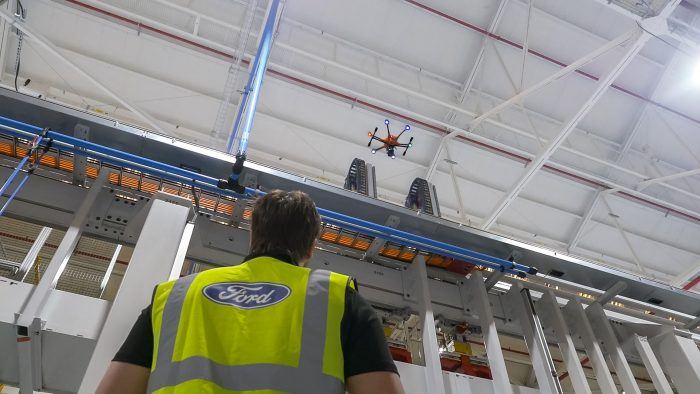- Automotive manufacturing facilities must uphold rigorous safety standards.
- Inspecting a plant’s pipework, machinery, and roof areas require massive amounts of time and energy.
- Ford of Europe is employing camera drones to more efficiently and safely inspect one facility in the UK.
Little Wonders
Innovations are common in the automotive industry. I am continually learning this as I widen my own scope of the business. Naturally, my favorite innovations deal with performance: this suspension makes that car handle better, such and such materials make it lighter, these engine features makes it faster, more efficient.
And on and on it goes.
Transitional Benefits
Those are the tangible innovations, meaning if you buy a new car, you will benefit in some way from said innovations. Then there are the not so tangible ones, unless you work in the business. Or in this case, a manufacturing facility. At least for now.
Little things, like what Ford is doing here, could have immense benefits for the rest of society in time. For now anyway, enter Ford’s Dagenham Engine Plant in the United Kingdom.
Safety Dance
Picture any chore or task with an inherent safety risk becasue of the height involved. This is a common occurrence for Dagenham Engine Plant employees while inspecting the facility’s vast roof areas. Previously, the team used automated and extendable platforms and scaffolding to check the gantries that support the plant’s heavy machinery.
With the average gantry spanning over 130 feet, each inspection would take a laborious 12 hours to complete. The Dagenham Engine Plant is almost two million square feet. Thus, covering the entire facility is as daunting as it is time consuming.
“We joked about having a robot do the work when there was a light bulb moment – use drones instead,” explained Pat Manning, Machining Manager, Ford Dagenham Engine Plant. “We used to have to scale heights of up to 50 metres to do the necessary checks on the roof and machining areas.”
Working Smarter
Now the crew uses camera drones to inspect the gantries, a process that takes just 12 minutes. The drones also inspect pipework, machinery, and will sniff out any air leaks. The drones ultimately help the plant comply with safety regulations. Manning and his crew can carry out more frequent inspections without having to interrupt production, and without the risks normally involved.
“Now we can cover the entire plant in one day and without the risk of team members having to work at dangerous heights,” he said.
Hence why Ford is evaluating how drones can be incorporated elsewhere in the company. Further, it’s interesting to think how things like this could be applied to life outside a manufacturing facility.
In the meantime, the video below explains more.
Carl Anthony is Managing Editor of Automoblog and resides in Detroit, Michigan. He studies mechanical engineering at Wayne State University, serves on the Board of Directors for the Ally Jolie Baldwin Foundation, and is a loyal Detroit Lions fan.
Photos, Video & Source: Ford Motor Company, Ford of Europe.
from Automoblog.net https://ift.tt/2NIzHw5

No comments:
Post a Comment